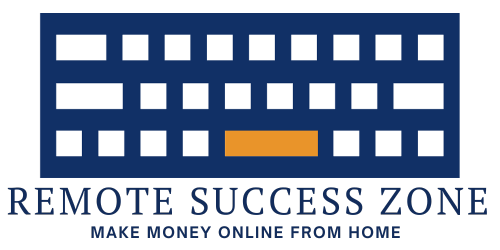So you’ve taken the plunge into the world of affiliate marketing, but now you’re wondering what constitutes a good conversion rate. In this article, we will explore the factors that contribute to a successful conversion rate, as well as provide a benchmark to help you gauge your own performance. Whether you’re a seasoned affiliate marketer or just starting out, understanding what makes a conversion rate “good” can be vital for your success in this competitive industry. Let’s dive in and discover what you need to know about achieving optimal conversion rates in affiliate marketing.

Factors influencing conversion rate
Quality of traffic
The quality of traffic refers to the type of visitors who come to your website. It is important to attract relevant and interested visitors to increase the chances of conversion. High-quality traffic consists of individuals who are genuinely interested in your products or services and are likely to make a purchase. This can be achieved through targeted marketing efforts, such as keywords and demographics.
Target audience
Understanding your target audience is crucial to improving your conversion rate. By knowing who your ideal customers are, you can tailor your marketing messages and strategies to resonate with them. Conducting market research and creating buyer personas can help you gain insights into your target audience’s preferences, pain points, and buying behavior. By aligning your messaging and offering with their needs, you can increase the likelihood of conversion.
Product relevance
The relevance of your product to your target audience is another key factor in conversion rate optimization. If your product does not meet the needs or interests of your audience, they are unlikely to convert. It is crucial to offer products that are closely aligned with your target audience’s desires and pain points. Conducting thorough market research and understanding the unique value proposition of your products can help you ensure product relevance.
Website design and user experience
The design and usability of your website play a significant role in determining the conversion rate. A well-designed website with an intuitive user experience can instill trust and confidence in visitors, making them more likely to convert. Optimize your website layout, navigation, and load times to ensure a smooth and seamless user experience. Ensure that your website is mobile-friendly and compatible with different devices to cater to the preferences of your target audience.
Call to action
Having clear and compelling calls to action (CTAs) is essential for improving conversion rates. A CTA prompts visitors to take a specific action, such as making a purchase or signing up for a newsletter. It is important to create CTAs that are visually appealing, easily noticeable, and clearly communicate the desired action. Test different colors, wording, and placements to determine which CTAs have the highest conversion rates.
Pricing and incentives
The pricing of your products or services can significantly impact your conversion rate. It is important to offer competitive pricing that aligns with the perceived value of your offerings. Additionally, providing incentives such as discounts, free trials, or exclusive bonuses can motivate visitors to convert. Experiment with different pricing strategies and incentives to find the optimal balance between attracting customers and maintaining profitability.
Trust and credibility
Establishing trust and credibility is crucial in encouraging visitors to convert. Displaying trust symbols, such as security badges or customer reviews, can help build trust and alleviate any concerns potential customers may have. Additionally, providing clear and transparent information about your company, products, and policies can further enhance credibility. Invest in building strong relationships with your customers and addressing any customer concerns promptly and efficiently.
Competitor comparison
Understanding your competitors and analyzing their strategies can provide valuable insights into improving your conversion rate. Evaluate how your competitors position themselves, their pricing strategies, USPs (Unique Selling Propositions), and marketing tactics. Identify areas where you can differentiate yourself and communicate your unique value proposition effectively. By benchmarking against your competitors, you can identify areas for improvement and stay ahead in the competitive landscape.
Industry benchmarks
Industry benchmarks can serve as a useful reference point for assessing the performance of your conversion rate. Different industries have varying average conversion rates, and understanding these benchmarks can help you set realistic goals and expectations. This knowledge can also guide your optimization strategies and provide insights into areas for improvement. Stay updated on industry trends and research to ensure you are aware of the benchmarks relevant to your niche.
Understanding conversion rate in affiliate marketing
Definition of conversion rate
Conversion rate is a metric in affiliate marketing that measures the percentage of visitors who complete a desired action, such as making a purchase, signing up for a newsletter, or filling out a form. It is a key performance indicator that reflects the effectiveness of your marketing efforts in converting visitors into customers. A higher conversion rate indicates that a larger fraction of your audience is taking the desired action, leading to increased revenue and profitability.
Importance of conversion rate in affiliate marketing
Conversion rate is crucial in affiliate marketing as it directly impacts your earnings and profitability. A higher conversion rate means more successful conversions and an increase in affiliate commissions. By optimizing your conversion rate, you can maximize the return on your marketing investments and achieve higher revenue. Additionally, a high conversion rate indicates that you are effectively targeting and engaging with your audience, which can lead to stronger relationships and long-term success in affiliate marketing.
How conversion rate is measured
Conversion rate is measured by dividing the number of conversions by the total number of visitors and multiplying it by 100. The formula is as follows:
Conversion Rate = (Conversions / Total Visitors) * 100
For example, if you had 1000 visitors to your website and 50 of them made a purchase, your conversion rate would be 5%.
Calculating conversion rate
To calculate the conversion rate, you need to have access to data on the number of conversions and the total number of visitors. This data can be obtained through analytics tools and tracking software, such as Google Analytics or affiliate platform analytics. By monitoring and analyzing this data, you can track your conversion rate over time and identify trends or areas for improvement.
Typical conversion rates in affiliate marketing
The typical conversion rate in affiliate marketing can vary depending on various factors, such as the industry, product type, and target audience. It is important to note that there is no standard or universally accepted “good” conversion rate, as it can vary widely. However, average conversion rates in affiliate marketing typically range from 1% to 5%. It is essential to benchmark your conversion rate against industry-specific averages to gain a better understanding of how your performance compares.
Benchmarks for different affiliate marketing sectors
E-commerce
In the e-commerce sector, the average conversion rate can vary depending on the type of products and target audience. According to industry benchmarks, the average conversion rate for e-commerce websites ranges from 1% to 3%. However, specific niches within e-commerce, such as fashion or electronics, may have higher or lower conversion rates. Factors such as pricing, product quality, and customer experience play a significant role in determining the conversion rate in the e-commerce sector.
Software as a Service (SaaS)
The average conversion rate for Software as a Service (SaaS) companies tends to be higher than in other sectors. This is because SaaS products often require a longer consideration and evaluation process before a visitor converts. According to industry benchmarks, the average conversion rate for SaaS companies ranges from 3% to 5%. However, it is important to note that the conversion rate can vary depending on factors such as competition, pricing, and the uniqueness of the SaaS offering.
Travel and hospitality
The travel and hospitality sector typically experiences lower conversion rates compared to other industries. This is due to the nature of travel-related purchases, which often involve higher consideration and planning. According to industry benchmarks, the average conversion rate for travel and hospitality websites ranges from 1% to 2%. However, factors such as competitive pricing, user reviews, and user-friendly booking processes can influence the conversion rate in this sector.
Finance and insurance
The finance and insurance sector often experiences lower conversion rates due to the complexity and level of trust required in these industries. Customers typically conduct extensive research and comparison shopping before making financial decisions. According to industry benchmarks, the average conversion rate for finance and insurance websites ranges from 1% to 2%. Building trust, providing transparent information, and offering competitive rates are important factors in optimizing the conversion rate in this sector.
Health and wellness
The health and wellness sector can have varying conversion rates depending on the specific products or services offered. According to industry benchmarks, the average conversion rate for health and wellness websites ranges from 2% to 4%. Factors such as the reputation of the brand, the effectiveness of the products, and customer testimonials can greatly influence the conversion rate in this sector. Providing valuable content, expert advice, and personalized recommendations can also enhance the conversion rate in the health and wellness industry.
Gaming and entertainment
The gaming and entertainment sector often experiences higher conversion rates due to the nature of impulse purchases and the emotional appeal of the products or services. According to industry benchmarks, the average conversion rate for gaming and entertainment websites ranges from 3% to 5%. Factors such as the popularity of the games or entertainment content, customer reviews, and user-friendly interfaces can significantly impact the conversion rate in this sector.
Fashion and beauty
The fashion and beauty sector typically has higher conversion rates due to the visually appealing nature of the products and the emotional connection that customers have with fashion and beauty. According to industry benchmarks, the average conversion rate for fashion and beauty websites ranges from 2% to 4%. Factors such as high-quality product images, detailed product descriptions, customer reviews, and easy return policies can contribute to a higher conversion rate in this sector.
Factors affecting industry benchmarks
Product type
The type of product or service being promoted can significantly influence industry benchmarks for conversion rates. Products or services with higher purchase consideration or complexity may have lower conversion rates compared to impulse purchase items. Factors such as pricing, target audience, and competition within the product niche can also affect the industry benchmarks for conversion rates.
Market saturation
The level of market saturation within a specific industry or niche can impact industry benchmarks for conversion rates. If the market is highly saturated with competitors offering similar products or services, it can be more challenging to achieve higher conversion rates. Differentiating your offering and focusing on unique value propositions can help overcome market saturation and potentially exceed industry benchmarks.
Seasonality
Seasonal fluctuations can affect industry benchmarks for conversion rates. For example, the holiday season may experience higher conversion rates due to increased consumer spending and gift-giving. On the other hand, slower periods may have lower conversion rates. Recognizing and adapting to seasonal trends can help you adjust your marketing strategies and optimize conversion rates during different times of the year.
Competitive landscape
The level of competition within a specific industry or niche can impact industry benchmarks for conversion rates. If there is intense competition and many companies vying for the same target audience, achieving higher conversion rates may be more challenging. Analyzing competitor strategies, differentiating your offering, and providing unique value can help you exceed industry benchmarks and stand out in a competitive landscape.
Target audience
The characteristics and preferences of your target audience can significantly impact industry benchmarks for conversion rates. Different demographics, behaviors, and motivations may result in varying conversion rates. Understanding your target audience’s needs, pain points, and desires can help tailor your marketing messages and strategies to optimize conversion rates within your specific target audience.
Promotional strategies
The promotional strategies employed by companies within a specific industry or niche can influence industry benchmarks for conversion rates. Different marketing tactics, channels, and messaging can result in varying conversion rates. Experimenting with different promotional strategies, analyzing their effectiveness, and optimizing based on the results can help you achieve higher conversion rates and outperform industry benchmarks.

Tips to improve conversion rate in affiliate marketing
Optimize website design and user experience
Invest in creating a visually appealing and user-friendly website design to enhance the user experience and encourage conversion. Ensure that your website loads quickly, is mobile-responsive, and has clear navigation. Use high-quality images and informative product descriptions to showcase your offerings effectively. A clean and intuitive layout can make it easier for visitors to find what they are looking for and make a purchase.
Research and understand your target audience
Conduct thorough market research and create detailed buyer personas to gain insights into your target audience’s preferences, pain points, and motivations. Tailor your marketing messages and strategies to resonate with their specific needs and desires. Use this understanding to create content, promotions, and recommendations that are highly relevant and compelling to your audience.
Promote relevant products
Ensure that the products you are promoting are highly relevant to your target audience. Review and select products that align with their interests, needs, and purchasing behavior. Take the time to understand the unique value proposition of each product and communicate it effectively to your audience. By focusing on promoting products that genuinely solve their problems or enhance their lives, you can increase the likelihood of conversion.
Craft compelling call-to-action
Create clear and compelling calls-to-action (CTAs) that prompt visitors to take the desired action. Use action-oriented language and visually attractive buttons or links to make your CTAs stand out. Experiment with different placements, colors, and wording to determine which CTAs generate the highest conversion rates. A well-crafted CTA can create a sense of urgency or excitement, motivating visitors to convert.
Offer competitive pricing and incentives
Evaluate the pricing of the products or services you are promoting and ensure they are competitive within the market. Consider offering incentives such as discounts, free shipping, or exclusive bonuses to incentivize visitors to convert. Conduct competitor analysis to identify areas where you can differentiate yourself through pricing or incentives. Strike a balance between profitability and attracting customers with competitive offers.
Build trust and credibility
Establishing trust and credibility is crucial in affiliate marketing. Display trust symbols, customer reviews, and testimonials to instill confidence in your audience. Provide clear and transparent information about your company, products, and policies. Be responsive to customer inquiries and address any concerns promptly and professionally. Building strong relationships with your audience and consistently delivering value can enhance trust and credibility, leading to higher conversion rates.
Benchmark against competitors
Regularly benchmark your performance against competitors in your niche. Analyze their strategies, conversion rates, and customer feedback to identify areas for improvement. Look for ways to differentiate yourself and communicate your unique value proposition effectively. By benchmarking against competitors, you can identify emerging trends, gaps in the market, and potential opportunities to outperform industry benchmarks.
Test and analyze performance
Implement A/B testing or multivariate testing to experiment with different elements of your marketing campaigns. Test different landing page designs, CTAs, promotional messaging, or pricing strategies to determine which variations generate the highest conversion rates. Analyze the results of these tests and use the insights to optimize your marketing efforts. Continuously refine your campaigns based on data and performance analysis.
Utilize data-driven decision making
Leverage data and analytics tools to gain insights into your visitors’ behavior and preferences. Monitor key performance indicators (KPIs) such as conversion rate, average order value, and bounce rate to track your performance. Analyze visitor demographics, traffic sources, and engagement metrics to understand your audience better. Use these insights to make data-driven decisions and optimize your marketing strategies.
Continuously optimize and refine
Conversion rate optimization is an ongoing process. Continuously analyze your performance, implement changes based on data and feedback, and refine your marketing strategies. Keep up with industry trends, emerging technologies, and changing customer preferences to stay ahead of the competition. Regularly review and update your website design, content, and promotions to ensure they remain relevant and compelling to your audience.
Importance of testing and optimization
A/B testing
A/B testing, also known as split testing, is a method used to compare two versions of a webpage or marketing element to determine which one performs better. By dividing traffic between two variations and analyzing the results, you can identify which elements or strategies generate higher conversion rates. A/B testing allows you to make data-driven decisions and continually optimize your marketing efforts based on real-world performance.
Multivariate testing
Multivariate testing is similar to A/B testing but involves testing multiple variables simultaneously. This allows you to analyze how different combinations of elements or strategies impact conversion rates. Multivariate testing can be used to assess the effectiveness of different headline variations, images, CTAs, or pricing strategies. By testing multiple variables, you can identify the optimal combination that generates the highest conversion rates.
Conversion rate optimization (CRO) best practices
Conversion rate optimization (CRO) involves implementing strategies and best practices to increase the percentage of visitors who convert. CRO encompasses various techniques, including testing and optimizing website design, CTAs, content, and user experience. By continuously analyzing user behavior and preferences, implementing changes, and monitoring the impact on conversion rates, you can optimize your marketing efforts for higher conversions.
Identifying bottlenecks in conversion funnel
The conversion funnel represents the journey a visitor takes from initially arriving on your website to completing a desired action. It typically consists of multiple stages, such as awareness, consideration, and conversion. Identifying bottlenecks in the conversion funnel involves analyzing the drop-off rates and behavior of visitors at each stage. This allows you to identify areas where visitors may be abandoning the conversion process and take steps to address and optimize those areas.
Implementing effective changes
Once you have identified areas for improvement through testing and analysis, it is important to implement effective changes. Prioritize changes that have the highest potential impact on conversion rates and monitor the results closely. Implement changes systematically, measure their impact, and iterate based on the data. Continuously monitor and optimize your marketing efforts to ensure sustained improvement in conversion rates.
Tracking and monitoring conversion rate
Key performance indicators (KPIs)
Key performance indicators (KPIs) are metrics used to measure the success and performance of your marketing efforts. In the context of tracking and monitoring conversion rate, relevant KPIs include conversion rate, average order value, customer acquisition cost, and revenue per visitor. Tracking and analyzing these KPIs can provide insights into the effectiveness of your marketing strategies and allow you to make data-driven decisions for optimization.
Conversion tracking tools
Conversion tracking tools allow you to monitor and analyze the performance of your marketing campaigns. These tools provide data on the number of conversions, traffic sources, and user behavior, allowing you to gain insights into your conversion rate. Popular conversion tracking tools include Google Analytics, Facebook Pixel, and affiliate platform analytics. By utilizing these tools, you can measure the impact of your marketing efforts and optimize your strategies accordingly.
Google Analytics
Google Analytics is a powerful analytics tool that can provide comprehensive insights into your website’s performance and conversion rate. It allows you to track and analyze key metrics, such as sessions, bounce rate, conversion rate, and ecommerce transactions. By setting up conversion tracking and implementing goals within Google Analytics, you can gain valuable insights into visitor behavior and optimize your marketing efforts accordingly.
Affiliate platform analytics
Many affiliate networks and platforms provide their own analytics tools for tracking and monitoring conversion rates. These tools allow you to measure the performance of your affiliate campaigns, track conversions, and analyze traffic sources. By utilizing affiliate platform analytics, you can gain insights specific to your affiliate marketing efforts and optimize your strategies for higher conversion rates.
Custom tracking and reporting
In addition to using standard tracking tools, implementing custom tracking and reporting can provide deeper insights into your conversion rates. By setting up custom tracking parameters, such as UTM parameters, you can track the performance of specific campaigns, channels, or promotional strategies. Custom reporting and analytics tools can help you identify trends, patterns, and opportunities for optimization specific to your affiliate marketing campaigns.
Conclusion
In conclusion, conversion rate in affiliate marketing plays a crucial role in determining the success and profitability of your marketing efforts. Factors such as the quality of traffic, target audience, product relevance, website design, and user experience all influence the conversion rate. Understanding industry benchmarks, conducting testing and optimization, and tracking key performance indicators are essential for improving conversion rates. By continuously refining your marketing strategies, tailoring your messaging to your target audience, and optimizing your website and user experience, you can achieve higher conversion rates and maximize your affiliate marketing success.


